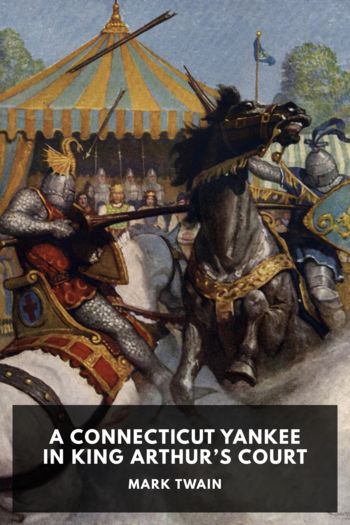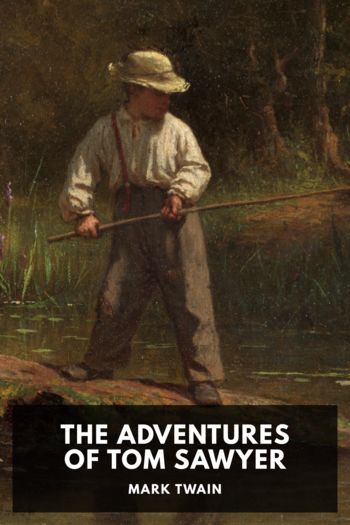Cats in Space and Other Places, Bill Fawcett [i like reading books .TXT] 📗

- Author: Bill Fawcett
Book online «Cats in Space and Other Places, Bill Fawcett [i like reading books .TXT] 📗». Author Bill Fawcett
Halloran left the ward. Colonel Buford Early waited for him outside; as usual, his case officer exuded an air of massive, unwilling patience.
"Just a minor problem," Halloran said, shaken more than he wished the other man to know.
"Minor?"
"Telepath is dead. He saw my thoughts."
"He thought you were a kzin?"
"Yes. He wouldn't have tried reading me if he thought I was human."
"What happened?"
"I drove him crazy," Halloran said. "He was close to the edge anyway . . . I pushed him over."
"How could you do that?" Colonel Early asked, brow lowered incredulously.
"I had a salad for lunch," Halloran replied.
Halloran knew better than to wake a kzin in the middle of a nightmare. Fixer-of-Weapons had not rested peacefully the last four sleeps, and no wonder, with Halloran testing so many hypotheses, hour by hour, on the captive.
The chamber in which the kzin slept was roomy enough, five meters on a side and three meters high, the walls colored a soothing mottled green. The air was warm and dry; Halloran had chapped lips from spending hours and days in the hapless kzin's company.
Thinking of a kzin as hapless was difficult. Fixer-of-Weapons had been Chief Weapons Engineer and Alien Technologies Officer aboard the invasion cruiser War Loot, a position demanding great strength and stamina even with the wartime dueling restrictions, for many other kzinti coveted such a billet.
War Loot had been on a mission to probe human defenses within the ecliptic; to that extent, the kzinti mission had succeeded. The cruiser had been disabled within the outer limits of the asteroid belt by converted propulsion beam lasers three weeks before, and against all odds, Fixer-of-Weapons and two other kzin had been captured. The others had been severely injured, one almost cut in half by a shorn and warped bulkhead. The same bulkhead had sealed Fixer-of-Weapons in a cabin corner, equipped with a functional vent giving access to seven hours of trapped air. At the end of six and a half hours, Fixer-of-Weapons had passed out. Human investigators had cut him free . . .
And brought him to Ceres, largest of the asteroids, to be put in a cage with Halloran.
To Fixer-of-Weapons, in his more lucid moments, Halloran looked like a particularly clumsy and socially inept kzin. But Halloran was a California boy, born and bred, a graduate of UCLA's revered school of music. Halloran did not look like a kzin unless he wanted to.
Four years past, to prove to himself that his life was not a complete waste, he had spent his time learning to differentiate one Haydn piano sonata or string quartet from another, not a terribly exciting task, but peaceful and rewarding. He had developed a great respect for Haydn, coming to love the richness and subtle invention of the eighteenth century composer's music.
To Earth-bound flatlanders, the war at the top of the solar system's gravity well, with fleets maneuvering over periods of months and years, was a distant and dimly perceived threat. Halloran had hardly known how to feel about his own existence, much less the survival of the human race. Haydn suited him to a tee. Glory did not seem important. Nobody would appreciate him anyway.
Halloran's parents, and their fathers and mothers before them for two and a half centuries, had known an Earth of peace and relative prosperity. If any of them had desired glory and excitement, they could have volunteered for a decades-long journey by slowboat to new colonies. None had.
It was a Halloran tradition; careful study, avoidance of risk, lifetimes of productive peace. The tradition had gained his grandfather a long and productive life—one hundred and fifty years of it, and at least a century more to come. His father, Lawrence Halloran Sr., had made his fortune streamlining commodities distribution; a brilliant move into a neglected field, less crowded than information shunting. Lawrence Halloran Jr., after the death of his mother in an earthquake in Alaska, had bounced from school to school, promising to be a perpetual student, gadding from one subject to another, trying to lose himself . . .
And then peace had ended. The kzinti—not the first visitors from beyond the Solar System, but certainly the most aggressive—had made their presence known. Presence, to a kzin, was tantamount to conquest. For hundreds of thousands of kzin warriors, serving their Patriarchy, Earth and the other human worlds represented advancement; many females, higher status and lifetime sinecures, without competition.
Humans had been drawn into the war with no weapons as such. To defend themselves, all they had were the massive planet-and asteroid-mounted propulsion lasers and fusion drives that powered their starships. These technologies, some of them now converted to thoroughgoing weapons by Belters and UN engineers, provided what little hope humans had . . .
And there was the bare likelihood—unconfirmed as yet—that humans were innately more clever than kzinti, or at least more measured and restrained. Human fusion drives were certainly more efficient—but then, the kzinti had gravity polarizers, not unlike that found on the Pak ship piloted by Jack Brennan, and never understood. The Brennan polarizer still worked, but nobody knew how to control it—or build another like it. Gradually, scientists and UNSN commanders were realizing that capture of kzinti vessels, rather than complete destruction, could provide invaluable knowledge about such advanced technology.
Gravity polarizers gave kzin ships the ability to travel at eight-tenths the speed of light, with rapid acceleration and artificial gravitation . . . The Kzinti did not need super-efficient fusion drives.
Halloran waited patiently for the Fixer-of-Weapons to awaken. An hour passed. He rehearsed the personality he was constructing, and toned the image he presented for the kzin. He also studied, for the hundredth time, the black markings of fur in the kzin's face and along his back, contrasting with the brownish-red undercoat. The kzin's ears were ornately tattooed in patterns Halloran had learned symbolized the intermeshed bones of kzinti enemies. This was how the Kzinti recognized each other, beyond





Comments (0)